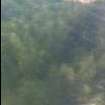So sad. I really don’t mean to offend you but it almost seems as if you’re just as unaware as a lot of other people about the tremendous benefits of hydrilla.
Take a look at this thread about what hydrilla did for the potomac river. This is coming from a scientist who studied non-native species in the Potomac river for over 30 years.
Do me a favor and read replies #6 and #9, too.
http://scducks.com/forum/showthread.php?8832-Hydrilla-the-Savior
You guys... this is supposed to be a bass fishing site... hydrilla has done so many fantastic, absolutely amazing things for so many waterways.
Lake Austin with hydrilla was a pristine and clear lake with 12-14 feet of visibility.
Now, with zero grass in it, it barely has a foot or two of visibility. It’s a muddy mess. People are saying there’s a really funny odor to the water. And, again, the fishing is terrible.
Hydrilla can be managed correctly.
I’ll post some other threads about how some fisheries biologists are starting to understand and accept the presence of hydrilla and trying to manage it correctly so it has a sustainable presence in whatever body of water it appears in.
You know your last statement is sort of bizarre. You’re not willing to accept that hydrilla is a fantastic resource even if its a non-native plant but you’re willing to stand by idly while biologists introduce a different non-native species that have proven to be an incredibly destructive force, grass carp.
So sad. I really don’t mean to offend you but it almost seems as if you’re just as unaware as a lot of other people about the tremendous benefits of hydrilla.
Take a look at this thread about what hydrilla did for the potomac river. This is coming from a scientist who studied non-native species in the Potomac river for over 30 years.
Do me a favor and read replies #6 and #9, too.
http://scducks.com/forum/showthread.php?8832-Hydrilla-the-Savior
You guys... this is supposed to be a bass fishing site... hydrilla has done so many fantastic, absolutely amazing things for so many waterways.
Lake Austin with hydrilla was a pristine and clear lake with 12-14 feet of visibility.
Now, with zero grass in it, it barely has a foot or two of visibility. It’s a muddy mess. People are saying there’s a really funny odor to the water. And, again, the fishing is terrible.
Hydrilla can be managed correctly.
I’ll post some other threads about how some fisheries biologists are starting to understand and accept the presence of hydrilla and trying to manage it correctly so it has a sustainable presence in whatever body of water it appears in.
You know your last statement is sort of bizarre. You’re not willing to accept that hydrilla is a fantastic resource even if its a non-native plant but you’re willing to stand by idly while biologists introduce a different non-native species that have proven to be an incredibly destructive force, grass carp.














